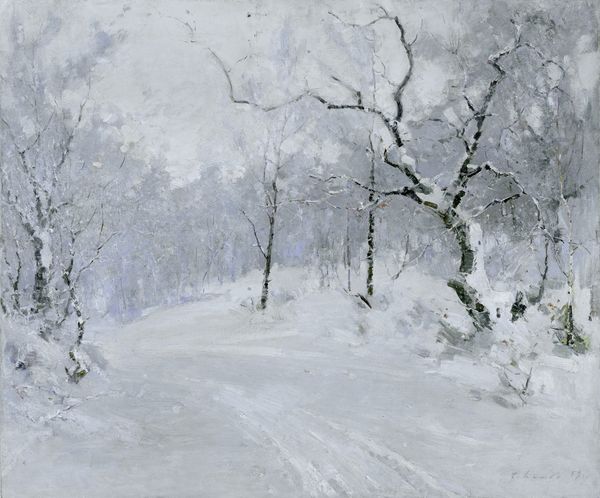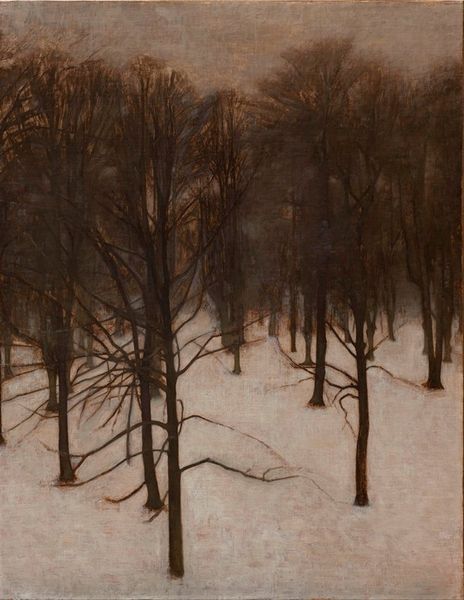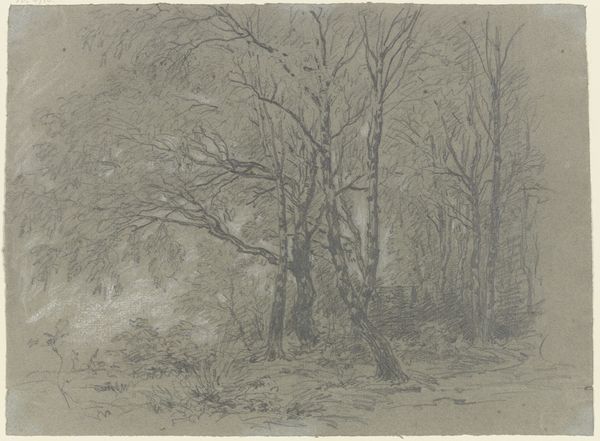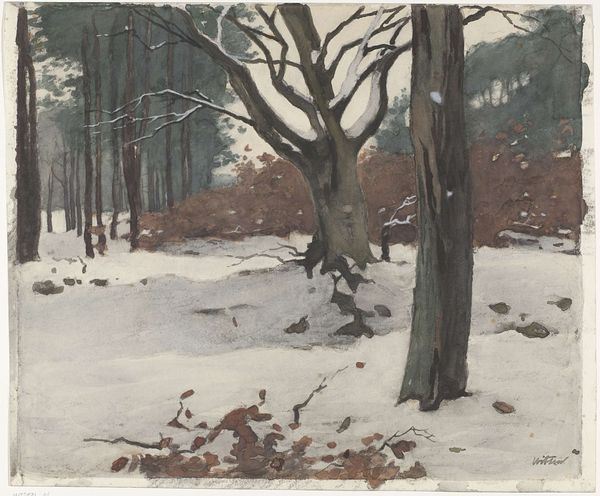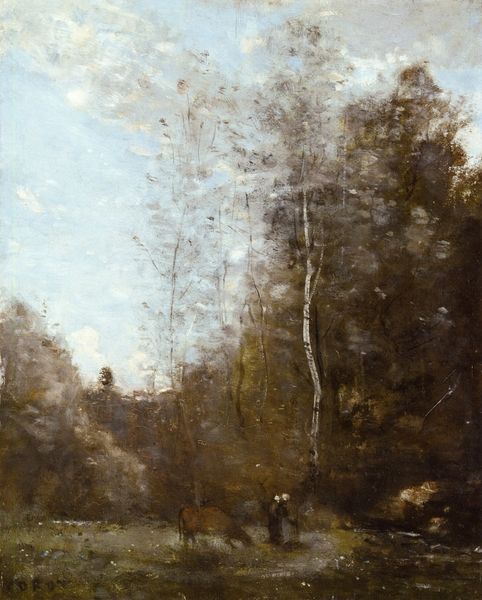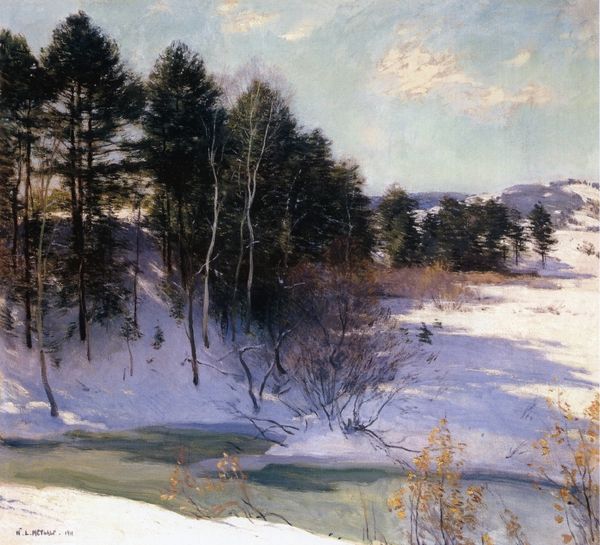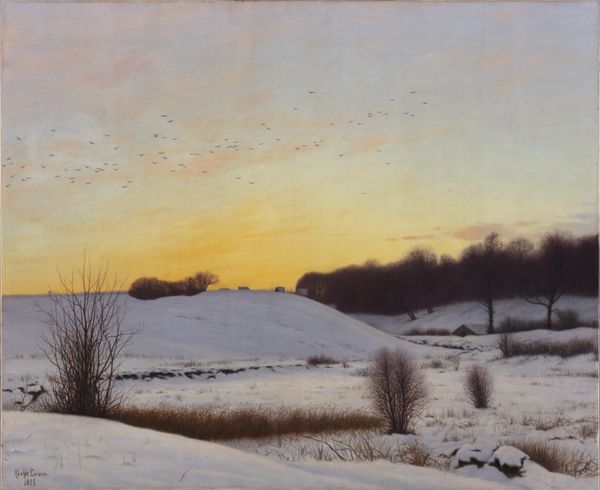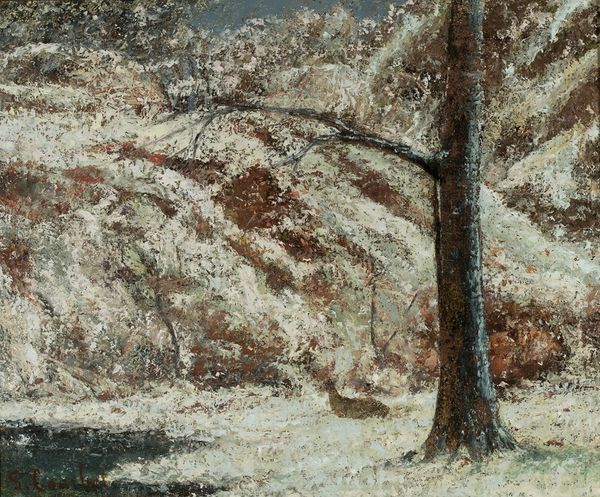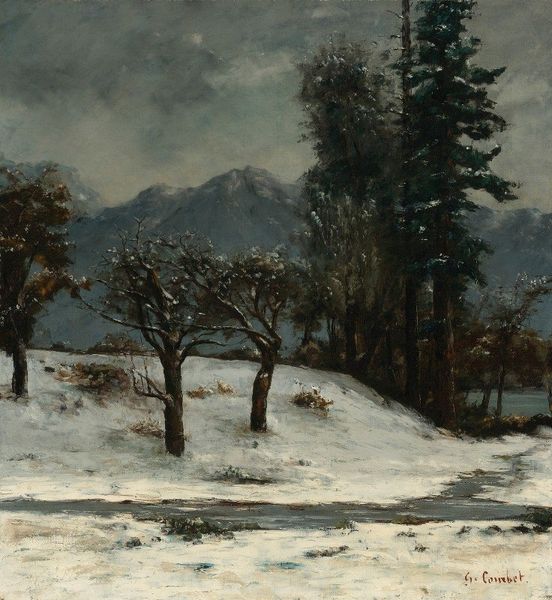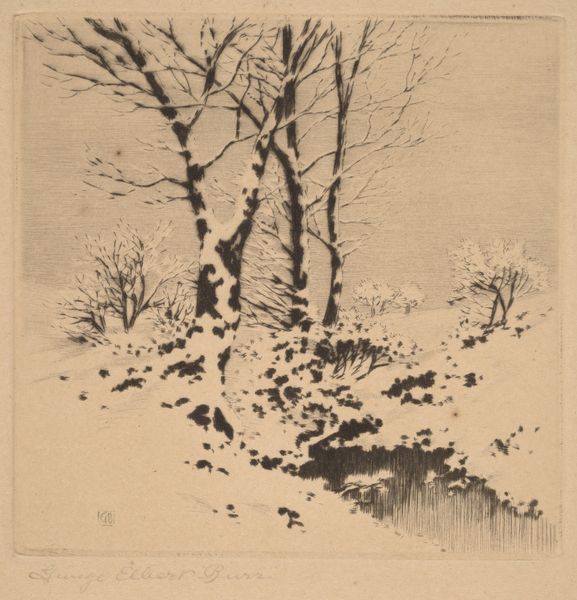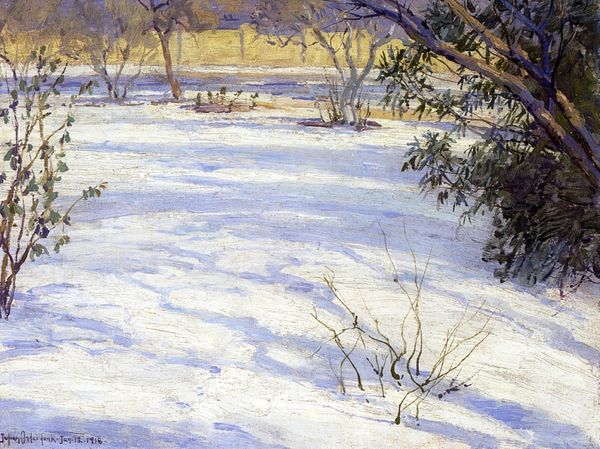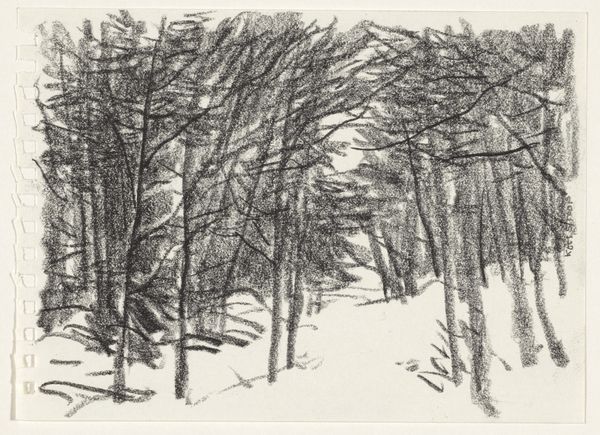
Dimensions: overall: 30.48 × 40.64 cm (12 × 16 in.)
Copyright: National Gallery of Art: CC0 1.0
Curator: This is “Woods in Winter,” an oil painting created in 1886 by Charles Warren Eaton. Editor: Oh, there's a quiet melancholy about it. It's mostly grays and browns, a very muted palette. It feels like a hushed breath hanging in the cold air. Curator: Eaton was quite influenced by the Barbizon school, a group of landscape painters who emphasized mood and atmosphere, so I imagine it was painted "en plein air." Editor: That’s right. I notice how the vertical tree trunks establish a rhythm through the painting and I'm fascinated by how little color there actually is. You get the sense of the forest pressing in, even as light breaks through the trees. It's interesting because in iconography, the forest often symbolizes trials and darkness. I wonder if Eaton was channeling some of that unconsciously? Curator: It wouldn’t surprise me. Think about how winter landscapes frequently signify stillness and introspection. Those footprints in the foreground snow suggest human presence but also make you ponder how fragile and transient we are compared to nature. They serve as potent symbols for mortality. Editor: Agreed, and look at how Eaton softens everything. Even though we can identify it as a forest in winter, he's less concerned with precise representation and more interested in the feeling it evokes. The light isn’t just light; it’s an emotional element, isn't it? Curator: I completely agree. In his landscapes, Eaton sought not just to record a place but to capture something felt and intensely private. I imagine this artwork offers us all space to pause, breathe, and simply reflect. Editor: Indeed. For me, it acts almost as a meditative reminder of our place within the cycles of life, decay, and renewal. It feels quite apt, really, a wintry tableau calling for inner warmth and remembrance.
Comments
No comments
Be the first to comment and join the conversation on the ultimate creative platform.
